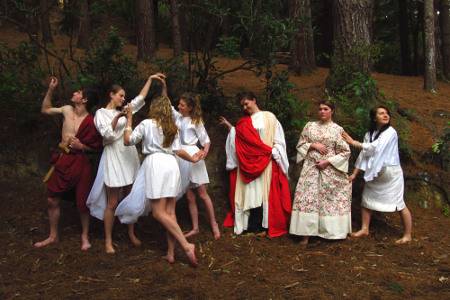What is eurythmy?
When the original Waldorf School was founded, Rudolf Steiner included eurythmy among the core subjects from the beginning. It is exclusively taught in Waldorf schools and has a unique position within the curriculum. Eurythmy is an art of movement that engages the whole human being, artistically integrating inner experiences of music and speech with physical movement and gestures.
In eurythmy, the inner movement that gives rise to speech and music is transformed and externalized into specific and meaningful movements.
Eurythmy also works with the polarities of levity and gravity
and is essentially an artistic process.
Why?
- The aims of eurythmy lie at the heart of the Waldorf curriculum. Eurythmy harmonises the developmental processes, integrating the spheres of thinking, feeling and willing.
- Eurythmy aims to harmonise the child’s soul-spiritual nature with the bodily organization by making the body a more flexible and responsive instrument to the soul’s intentions.
- Develops spatial awareness, co-ordination, balance in three dimensional space.
- What the children reveal in their movements can, to the practiced eye of the teacher, contribute to an overall picture of their educational and personal development.
- Working in groups develops social awareness by helping children integrate their movements with others. a social capacity to sense the movements of the others.
